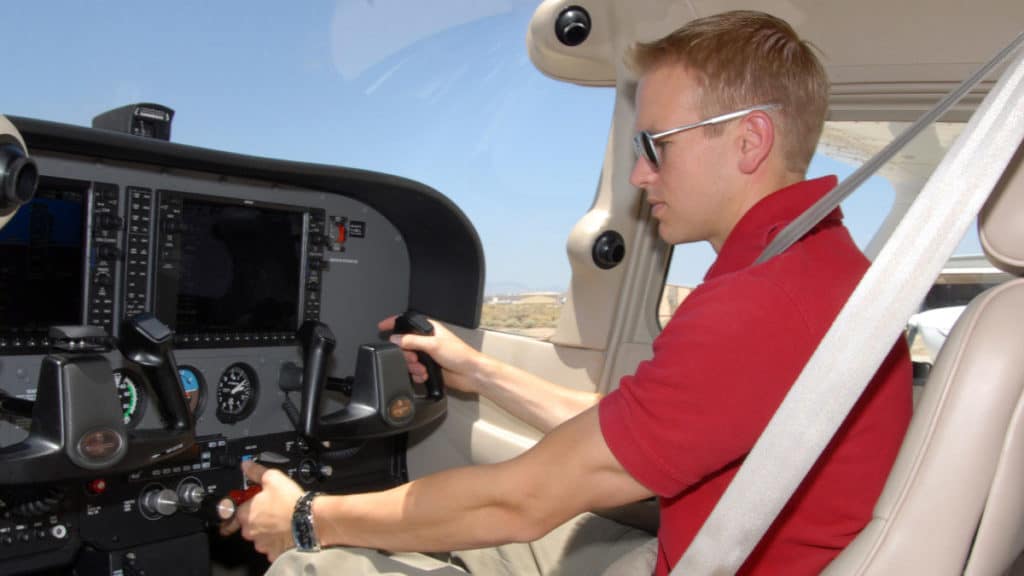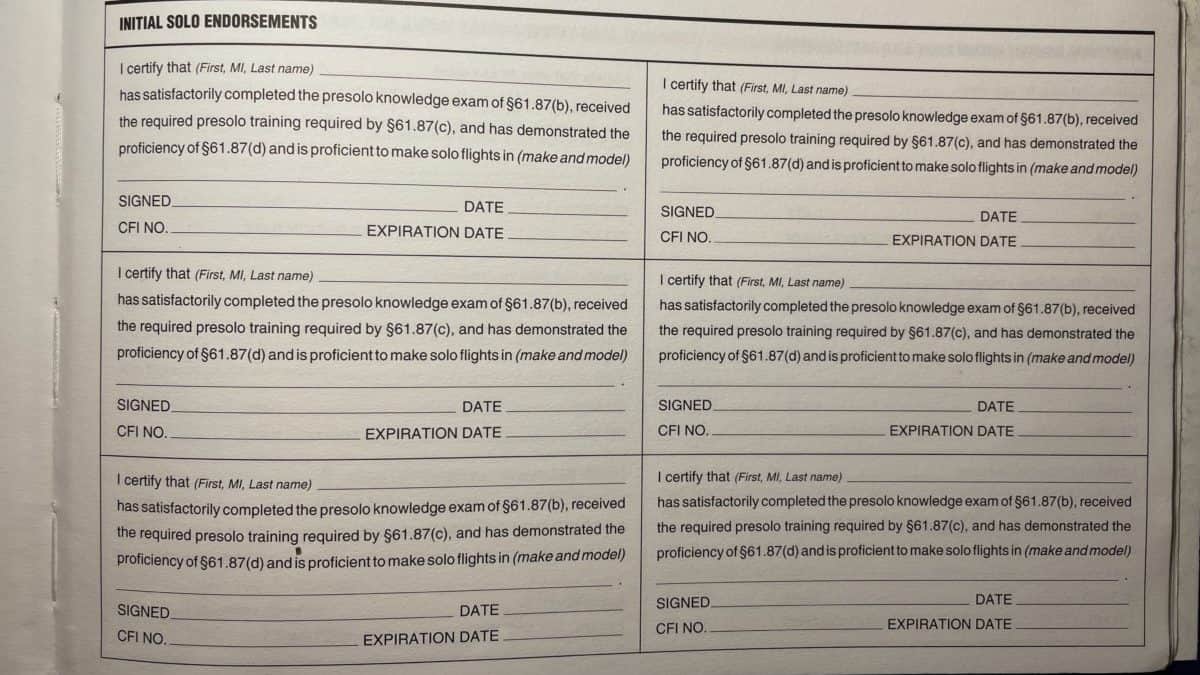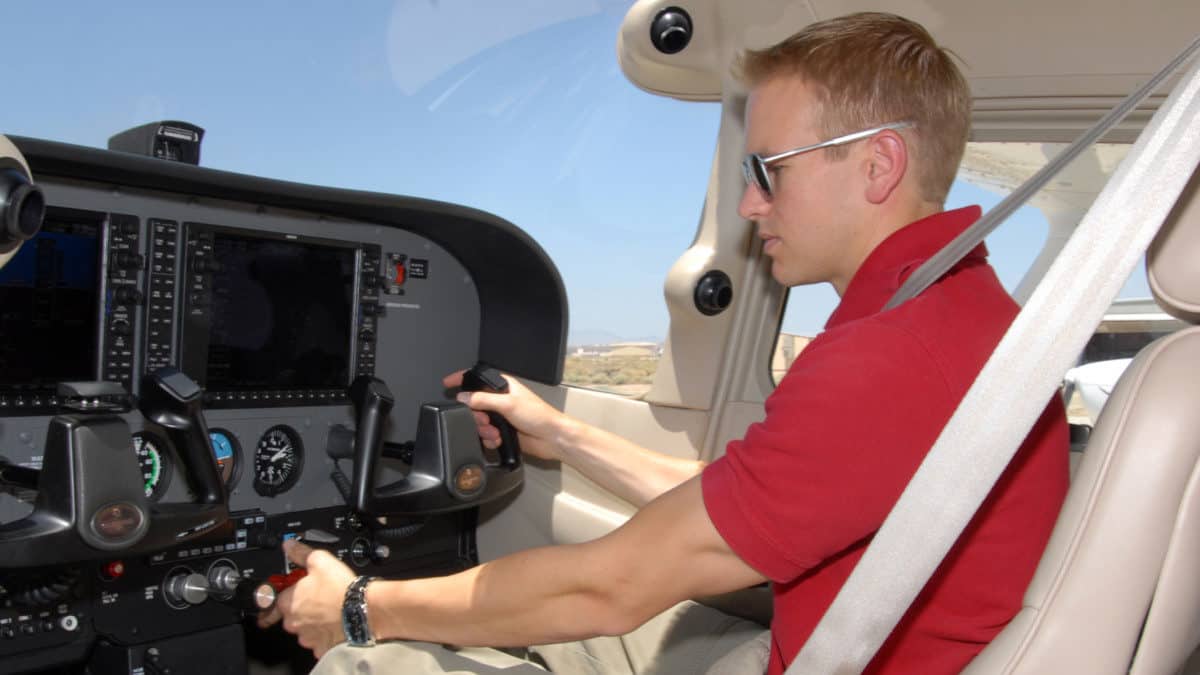
So you’re on your way to becoming a pilot. This is an exciting time that you will never forget. And, while a Student Pilot Certificate isn’t required to take flying lessons, you will need one for perhaps the most memorable day of your life – the day of your first solo flight!
Okay, there are other monumental days that rank up there, too. Graduating high school or college, getting married, and the birth of a child come to mind, too. But let me tell you, the day of my first solo at age 16 at Hyde Field in Clinton, Maryland is forever etched in my mind, from start to finish.
I had no idea that on this day, after completing a few touch-and-goes, my instructor would have me pull over to the side of the taxiway so that he could hop out of the plane. Three more touch-and-goes, solo, and it was time to taxi to the ramp for the traditional cutting off of the back of my shirt.
Of course, at his earlier direction, I had applied for, and received my Student Pilot Certificate, as well as my medical certificate, authorizing me to do a few more laps around the pattern on my own, but then there followed some questions…
What Can Student Pilots Legally Do?
A student pilot certificate allows a person to fly solo in the aircraft in which they have trained once they are 16 years old, have passed a written examination, a medical examination, and have been endorsed as competent by a Certified Flight Instructor for the type of aircraft in which they have trained.
Student pilots can fly with an instructor as often as they’d like without having a Student Pilot Certificate, but in order for their instructor to give them the go-ahead to reach for the skies, alone, they’ll need the FAA-issued certification.
They cannot fly solo without a Student Pilot Certificate, but it’s super easy to obtain. Click here to view FAA form 8710-1, “Airman Certificate and/or Rating Application”.
Canadian regulations are similar, but not exactly. View general information on Canadian pilot licenses and permits at this website.
To be eligible for a student pilot certificate, they must be at least 16 years old (14 in Canada), be able to speak, read and understand English, and be able to obtain a medical certificate from an FAA or Canadian Government approved Aviation Medical Examiner.
For more information on aviation medical examinations and medical issues please see this group of helpful articles:
Pilot Medical Conditions – All You Need To Know
Prior to flying solo, a student also needs to get familiarized with many important FAA regulations and get to intimately know the aircraft that they will be training in. Their flight instructor will direct them to this important information online and perhaps provide some of it to them directly.
There will be a theory-specific written test required, which upon passing will be endorsed by their instructor into their logbook. This endorsement must be made before their first solo, and remains valid for 90 days.

A question often asked by a student pilot after his/her first solo is, “When can I fly cross-country on my own?”. The answer isn’t immediate, but you’re getting close.
Solo cross-country flight will require further training and another endorsement by your instructor and is added to your logbook after the CFI (Certified Flight Instructor) is confident that your preparation for such an undertaking is more than adequate.
In other words, your instructor needs to be sure that you can complete the pre-flight planning, find the airport(s) on your own that is in your flight plan, and return home safely. Student pilots can now also learn how to file a flight plan.
Flying the solo cross-country flight requires a lot of training in navigating the aircraft as well as being proficient on the radio talking with other pilots and air traffic control. It is no mean feat!
To me, my first solo cross-country really gave me the boost of confidence that I was going to soon become a private pilot. The completion of two point-to-point cross-country flights during my training, and the more challenging long cross-country that entailed a triangular route between three airports, told me that I was soon going to earn my license!

Join My Newsletter & Get Great Tips, Information and Experiences To Help You Become a Superb Pilot!
What Can’t Student Pilots Legally Do?
As a student pilot, the list of what you cannot do is much longer than what is permissible. While you may be allowed to fly solo now with the proper endorsement from your flight instructor in your logbook, here are the many limitations of student pilots according to the Code of Federal Regulations/Title 14/Chapter I/Subchapter D/Part 61/Subpart C/Section 61.89: (yes, this is the actual location of these rules!)
- You may NOT be a designated pilot in command, or a co-pilot
- You may NOT carry passengers other than a Certified Flight Instructor (CFI) if you are flying as the pilot in command.
- You may NOT fly aircraft models which you aren’t endorsed to fly. In other words, if you’re training in a Cessna 152, you cannot fly solo in a Piper Cherokee or any other aircraft type.
- You may NOT fly for hire. Another person cannot pay you to fly them, or property, to another destination.
- You must fly utilizing Visual Flight Rules (VFR) only. This requires a minimum visibility of three statute miles during daylight hours, and five statute miles during night-time hours.
- If weather conditions are such that you may be unable to maintain visual contact with the ground, as a student pilot you are not permitted to fly.
- You may NOT operate an aircraft as part of a business venture.
- Student pilots may not fly solo internationally with the exception of training flights from specially designated airports in southwest Alaska (close to Juneau); to Whitehorse, Yukon, Canada, returning to Alaska while flying over the Province of British Columbia.
- Student pilots may NOT fly solo in any way that is contrary to restrictions specified and entered into their logbook by a Certified Flight Instructor (CFI).
- Renting of an aircraft by a student pilot is prohibited.
- As a student pilot, you may NOT act as one of multiple required flight crew members on any aircraft that stipulates more than one pilot is necessary to operate the type certificate of the aircraft. In the U.S. and many other countries, commercial aircraft that carry more than nine passengers and/or have an empty weight of more than 12,500 pounds, must have two fully certified pilots to operate the plane.
Granted, this lengthy list of what student pilots cannot do appears very restrictive, and that is exactly what it is designed to do. Flying is serious business, though you may never have so much fun doing anything else in your lifetime.
Whatever your flying goals are, after you earn your private or commercial pilot’s license/certificate and any subsequent ratings, the limitations above will feel inconsequential. You’ll also be thankful that such regulations exist for student pilots that follow you in the years to come. Adhering to the rules of the sky is all about safety. Your love of flying and exploration will only be enhanced if we all act accordingly.
Learn More…
Try These Articles:
* Pilot Logbooks – What Are They & Why You Need One?
* Private Pilot Privileges: What You Can & Cannot Do!


